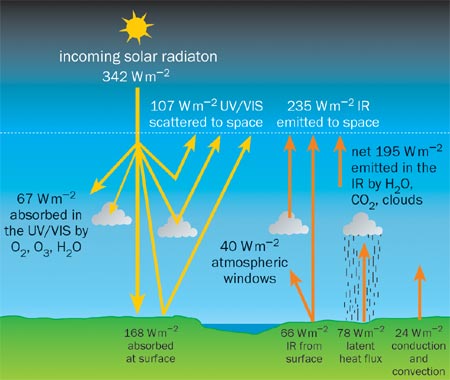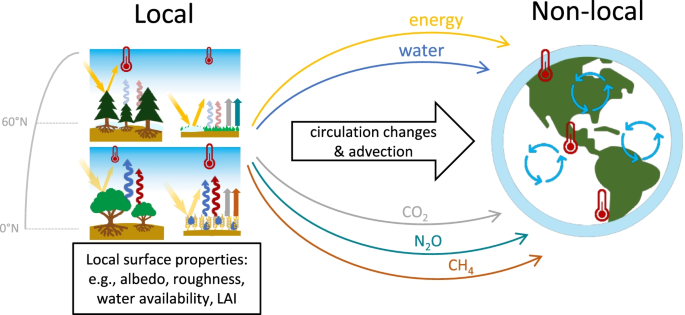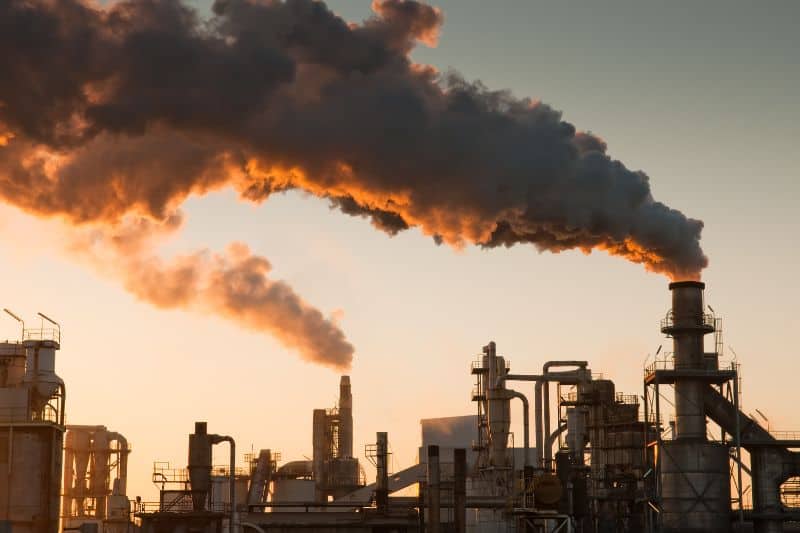Introduction
Climate change is a topic that has captured the attention of scientists, policymakers, and the general public alike. We often hear about the role of carbon dioxide (CO2) and methane (CH4) in trapping heat and driving global warming, but there’s another major player in this climate change equation that deserves our attention: water vapor.
Water vapor, the gaseous form of water, is the most abundant greenhouse gas in the Earth’s atmosphere. While it doesn’t receive as much attention as CO2, it plays a crucial role in shaping our climate. In this blog post, we will explore the significance of water vapor in climate change, its sources, and how it contributes to the ongoing global climate crisis.
Understanding Water Vapor
Water vapor is an invisible gas that exists in the Earth’s atmosphere. It is created when water evaporates from oceans, lakes, rivers, and even the soil’s surface. When water evaporates, it turns into vapor and rises into the atmosphere. As it ascends, the air temperature decreases, causing the vapor to condense into tiny water droplets or ice crystals. These tiny droplets and crystals form clouds, which play a critical role in regulating the Earth’s temperature.
Water vapor is unique among greenhouse gases because its concentration in the atmosphere varies greatly from place to place and over time. Unlike CO2 and CH4, which have relatively stable concentrations, water vapor levels can change rapidly due to weather patterns, temperature fluctuations, and humidity variations.
Water Vapor as a Greenhouse Gas
The Earth’s atmosphere contains a mixture of gases that interact with incoming solar radiation and outgoing heat from the planet’s surface. This interaction creates the greenhouse effect, a natural process that keeps the Earth’s temperature within a range suitable for life.
Greenhouse gases, including water vapor, absorb and re-radiate heat. They act like a blanket around the Earth, trapping some of the heat that would otherwise escape into space. This trapped heat warms the planet, making it habitable. However, when the concentration of greenhouse gases in the atmosphere increases, this natural process is intensified, resulting in global warming.
Water vapor contributes to the greenhouse effect in two main ways:
Feedback Mechanism: Water vapor acts as a positive feedback mechanism. When the atmosphere warms due to the presence of other greenhouse gases like CO2, it can hold more water vapor. As more water vapor enters the atmosphere, it amplifies the warming effect, creating a self-reinforcing cycle. This positive feedback contributes significantly to the overall warming of the planet.
Heat Absorption: Water vapor is efficient at absorbing heat. It absorbs heat not only from the sun but also from the Earth’s surface. This heat absorption contributes to the warming of the lower atmosphere, known as the troposphere.
Sources of Water Vapor
Water vapor enters the atmosphere primarily through the process of evaporation. Some of the key sources of water vapor include:
Oceans: The world’s oceans are the largest source of water vapor. The Sun’s energy heats the surface of the ocean, causing water to evaporate and release water vapor into the atmosphere.
Lakes and Rivers: Bodies of freshwater, including lakes and rivers, also contribute to water vapor in the atmosphere through evaporation.
Soil and Vegetation: Moisture from the soil and transpiration from plants release water vapor into the atmosphere. This process is especially important in terrestrial ecosystems.
Human Activities: Human activities, such as agriculture, industrial processes, and energy production, release water vapor into the atmosphere, albeit in smaller quantities compared to natural sources.
Impacts of Water Vapor on Climate Change
Intensification of Extreme Weather Events: The increased presence of water vapor in the atmosphere due to global warming leads to more frequent and severe extreme weather events. This includes heavier rainfall, more intense storms, and increased flooding.
Rising Global Temperatures: Water vapor’s positive feedback mechanism amplifies the warming effect of other greenhouse gases, leading to an overall rise in global temperatures. This contributes to the melting of polar ice caps and glaciers and rising sea levels.
Changes in Precipitation Patterns: As global temperatures rise, the distribution and patterns of precipitation are altered. Some regions may experience more prolonged droughts, while others may face increased rainfall and the risk of flash floods.
Impacts on Ecosystems: Changes in temperature and precipitation patterns driven by water vapor can have profound effects on ecosystems. Species may struggle to adapt, leading to shifts in biodiversity and potential extinctions.
Mitigating Water Vapor’s Impact
While water vapor itself is not directly controlled or regulated like CO2 or CH4 emissions, addressing its contribution to climate change involves mitigating the factors that amplify its presence in the atmosphere. This includes reducing emissions of other greenhouse gases, such as CO2 and CH4, which trigger the positive feedback loop with water vapor.
Additionally, strategies to adapt to the changing climate and its impacts, such as improving infrastructure to withstand extreme weather events and conserving water resources, are essential steps in addressing the consequences of water vapor-induced climate change.
Conclusion
Water vapor is an often-underestimated player in the complex climate change equation. Its role as a greenhouse gas and positive feedback mechanism magnifies the effects of global warming. Understanding the dynamics of water vapor in the atmosphere is crucial for addressing the ongoing global climate crisis.
To combat the impacts of water vapor on climate change, it is essential to reduce emissions of other greenhouse gases and take proactive measures to adapt to the changing climate. Only through comprehensive efforts to mitigate the various contributors to climate change can we hope to slow down its destructive effects and protect the future of our planet.





